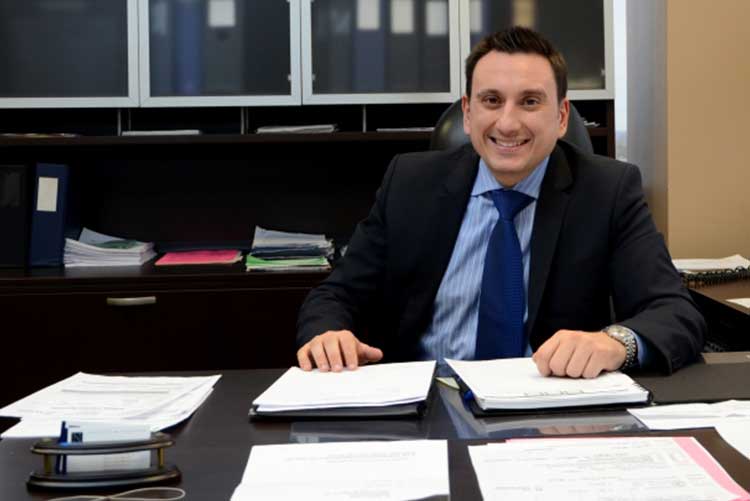The police did not violate the defendant’s rights to counsel. They did breach his privacy rights, his right to privacy. The breach of rights is sufficiently serious to warrant exclusion of the evidence needed by the Crown to prove guilt. The Defence asserts that the Ontario Provincial Police at this station adopted a “one size fits all policy” in which all detainees must use a toilet that is under surveillance. The charge is dismissed.
Synopsis
On January 13th, 2018 at approximately 11:35 p.m., PC THOURSON conducted a traffic stop on a 2017 black Mercedes motor vehicle bearing Ontario licence plate BXXX572 on QEW westbound, west of Seventh Street, City of St. Catherines, Niagara Region for the reason of speeding.
Upon interaction, PC Thourson observed a male driver in the Mercedes who identified himself with an Ontario photo driver’s licence in the name of EL with a date of birth: xxxx/xx/xx with an address in Grimsby, Ontario.
PC Thourson was satisfied with the driver’s identity. Upon conversation, PC Thourson detected an odour of alcohol from male’s breath as well as the driver admitted consumption,
At 11:42 p.m., PC Thourson read a breathalyzer demand and the driver understood. it 11:43 p.m., PC Thourson demonstrated the approved roadside screening test. At 11:44 p.m., male driver provided a successful sample which resulted in a fail.
At 11:45 p.m., the male was put under arrest for Drive over 80mgs and placed into the back of the cruiser. At 11:54 p.m., rights to counsel was read. At 11:55 p.m., caution was read and male understood. At 11:56 p.m., a breath demand was read.
Male was brought back to Niagara Detachment at 12:17 a.m. and the custody was turned over to the breach tech, PC PRIKKEN at 12:25 a.m.
PC PRIKKEN obtained the following suitable breath samples from the applicant:
- 12:32am: 120mgs of alcohol in a 100mls of blood, and
- 12:53am: 100mgs of alcohol in a 100mls of blood
Male also spoke to duty counsel prior to custody going over to PC Prikken.
At 1:03 a.m., PC Prikken advised that male completed his samples and both samples were over 80 and the male party was charged as a result and was released on a Promise to Appear at 1:33 a.m.
Why the Evidence Should be Excluded
The Defence asserts that the Ontario Provincial Police at this station adopted a “one size fits all policy” in which all detainees must use a toilet that is under surveillance. This, it is said, is particularly egregious because the defendant does not have a criminal record, was polite and cooperative throughout, and did not pose a safety risk to himself or others. With the benefit of hindsight, this submission is accurate. However, the police do not have the benefit of hindsight. They must take precautions to avoid harm and surveillance cameras are effective tools to do so.
In R. v. Clarke, 2015 ONCJ 228 (CanLII), the court noted the public policy rationales underscoring the practice of using surveillance cameras in places of detention, including the recommendation by a coroner’s inquiry that cells be constantly video recorded.
The police cannot be faulted for using surveillance cameras to monitor the activities of all detainees, notwithstanding how they present themselves. But they must do so with due regard to their dignity. That was not done in this case. Significantly, this issue is not a novel one. As noted, for at least seven years, courts have held that the police must take reasonable steps to afford a measure of privacy to detainees using the toilet. Some of these decisions have also suggested options for the police to consider. Several police forces have changed their practices accordingly. For example, the York Regional Police Service responded to the decision in Mok by digitally blacking out the toilet in the cell.
The Guelph Police Service has done the same. In this case, that would have allowed the police to monitor the defendant’s activities in the cell without revealing and creating a video record of his genitals. I do not suggest such technology must be used. There are other options available. My point is that the O.P.P., at least at the detachment in question, has elected to do nothing in response to the judicial commentary with the result that the genitals of detainees, including this defendant, are routinely monitored and recorded as they use the toilet.
This matter has arisen many times across the province, including at O.P.P. detachments; see R. v. Rowan, 2018 ONCJ 777 (CanLII). For this reason, the first branch of the Grant analysis favours exclusion of the evidence.
In coming to this conclusion, I reject the Crown’s submission that the seriousness of the section 8 breach is mitigated by the fact that the defendant used the toilet a second time – when he knew the cell was under video surveillance. Indeed, I find that the notice of video surveillance above the toilet is irrelevant because there is no other option available to detainees. They must use this toilet.
In dealing with the second branch of the Grant analysis, the Crown relies on R. v. Singh, supra, in arguing that the impact of the breach on the defendant’s Charter protected interests is not significant. However, the facts in that case are distinguishable: Mr. Singh was videotaped using the toilet with his back to the camera. His genitals were not captured on video. Justice Campbell acknowledged that the impact is far greater “where the video recordings of their washroom activities captured much more intrusive images of the naked private body parts of the accused” (para 42).
The Crown also argues that the section 8 breach is unrelated to the seizure of the breath samples. That is true. However, a direct causal connection is not required to advance a Charter claim. A temporal one can suffice.
Accordingly, on a traditional analysis of section 24(2) the second branch in Grant favours exclusion. On this approach, it is clear that when the first two branches favour exclusion, it will be a rare case in which the third branch – society’s interest in adjudication on the merits – will trump the result. That is so notwithstanding that the breath test results are highly reliable, that exclusion of the evidence is fatal to the prosecution, and that every person who drives while impaired and/or with a blood alcohol level above the legal limit is a risk to public safety.
Result
The police did not violate the defendant’s rights to counsel.
They did breach his privacy rights. The latter is sufficiently serious to warrant exclusion of the evidence needed by the Crown to prove guilt.
The charge is dismissed.
Your Winning Defence Team
You’re not guilty unless a judge says you are, not the police or the crown attorney.
It’s your right as a Canadian citizen to be properly defended in court and to have the evidence of your accuser challenged by a criminal lawyer.
As a criminal defence lawyer I have years of experience dealing with assaults and assault related charges. Together with my network of legal professionals I provide experienced legal representation for those looking to do everything possible to win and be properly represented in criminal court.
Knowing the court system, the crown attorney’s, police and judges and having them know you can have dramatic implications. Experience does count in criminal defence.

Your lawyer’s reputation can have a bearing as to how your case proceeds and I stake mine on doing everything possible to win your case, ensuring the best possible defence, with the reviews and winnings to prove it. The court knows the lawyers who fight for their clients and present compelling and aggressive defence arguments.
Call today at 416-731-7113 to discuss your legal defence today.
Send me an Email







Comments are closed.